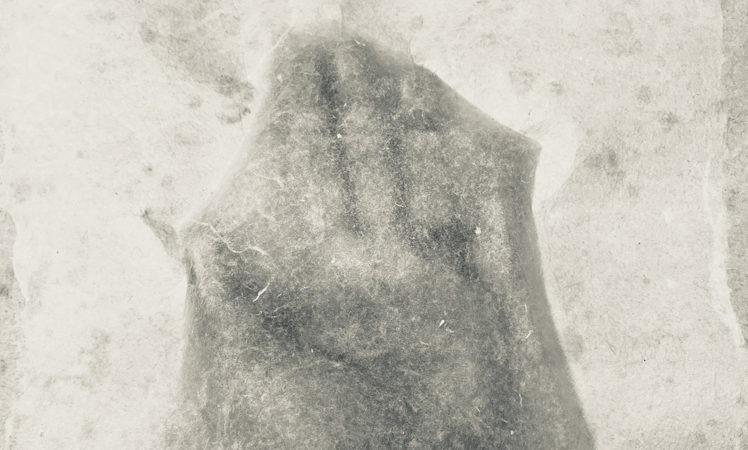Now that I am deep into the final year of my MFA in Photography at Columbia College Chicago, I find I’m reflecting on the problematic nature, the constraining potential of what the rational, well-ordered, intellectual, academic, rectilinear, traditionally masculine modes of thinking, doing and making. I am also researching models of success both out in the world and from an interior perspective. I wonder how I (and others if they like) might reframe experience and path from these masculine modes and views of success to those more feminine in nature, more internal processes, heroine’s journeys of transformation for the good of myself, for the good of all beings.

The Gold Unearthed, 2022.
Crown Point, Indiana, silk intervention in the landscape,
photographed and arranged as triptych.
Archival inkjet print.
Dimensions variable.
I’m thinking a lot about entanglement, of our collective dilemmas and how we might move forward, borrowing Donna Harroway’s notion of a new period we have the potential to enter into, what she calls the Chthulucene. In her book, Staying with the Trouble (1), she writes:
“Chthulucene is a simple word. It is a compound of two Greek roots (khthôn and kainos) that together name a kind of timeplace for learning to stay with the trouble of living and dying in response-ability on a damaged earth. Kainos means now, a time of beginnings, a time for ongoing, for freshness. Nothing in kainos must mean conventional pasts, presents, or futures. There is nothing in times of beginnings that insists on wiping out what has come before, or, indeed, wiping out what comes after. Kainos can be full of inheritances, of remembering, and full of comings, of nurturing what might still be. I hear kainos in the sense of thick, ongoing presence, with hyphae infusing all sorts of temporalities and materialities.”
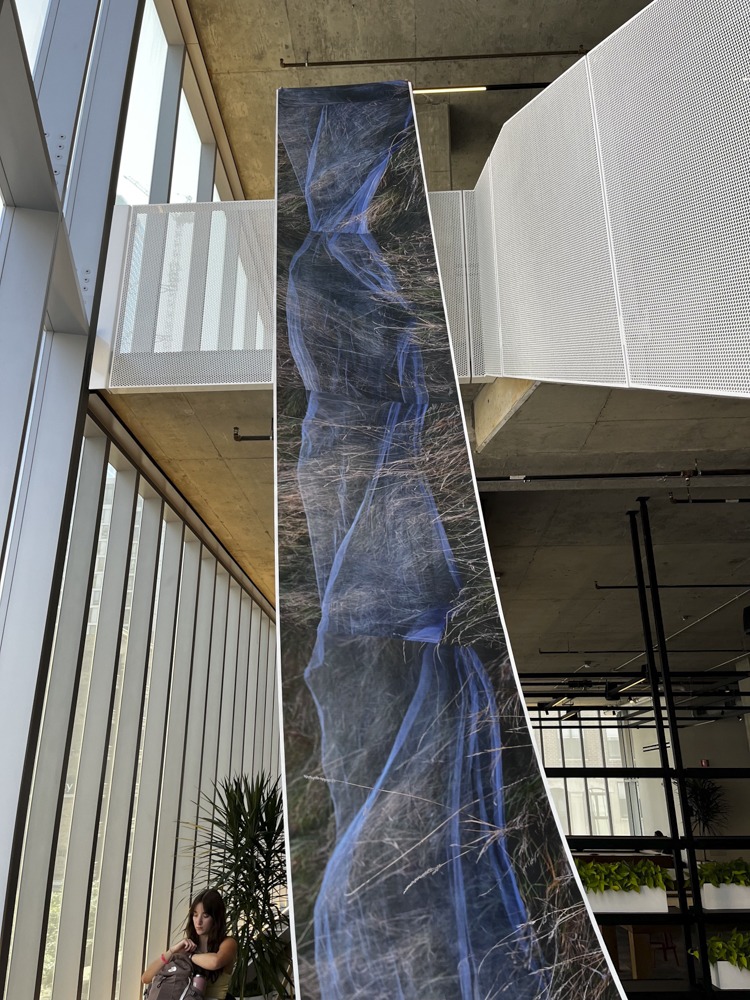
Blue River, 2023.
Palos, Illinois, silk intervention in landscape installed along natural hollows and gathering places for water and felt spiritual/energetic presence. Photographed step by step as part of a walk in which each step includes making a single photograph.
Photos are knitted together in Photoshop and printed as a 250-foot-long installation on paper and Phototek. This installation will be at Columbia College Chicago in the Student Center at 734 S Wabash and will remain on exhibition for three months. It opens on November 8th, 2023.
Dimensions ~ 250’ x 36” The piece traverses space beginning on the 5th floor, swoops through the air to land with a small wave on the 4th floor, and then proceeds across the open floor to the windows.
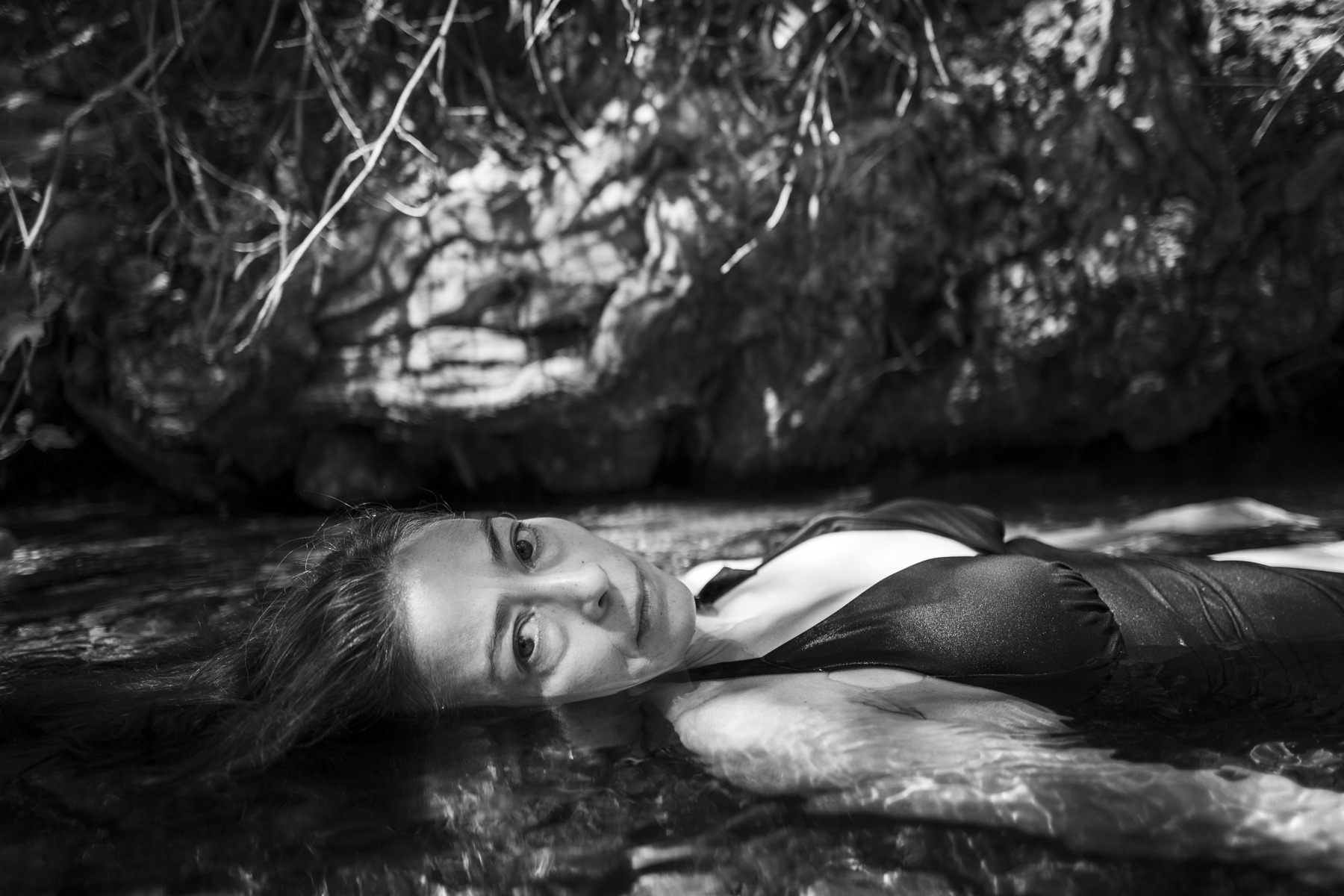
Christina, 2018.
New Mexico.
Part of an ongoing project and healing ritual experience, The Waters We Swim In.
Archival inkjet print
13″x19″ cotton rag
How easy it has been at times for me to have been sucked into the muck of existing frameworks, so invisible as to be practically without consciousness. Perhaps that is what in part, afflicts us all, a trance of the Anthropocene – how we got here without listening to the inner wise women who know. I’ve found readings that suggest leaving aside the apocalyptic Anthropocene as being too extreme and fateful. We might get stuck there too. What we think about, we become.
As Harroway has it, “The task is to make kin in lines of inventive connection as a practice of learning to live and die well with each other in a thick present. Our task is to make trouble, to stir up potent response to the devastating event, and to settle troubled waters and rebuild quiet places” (2016, location 297).
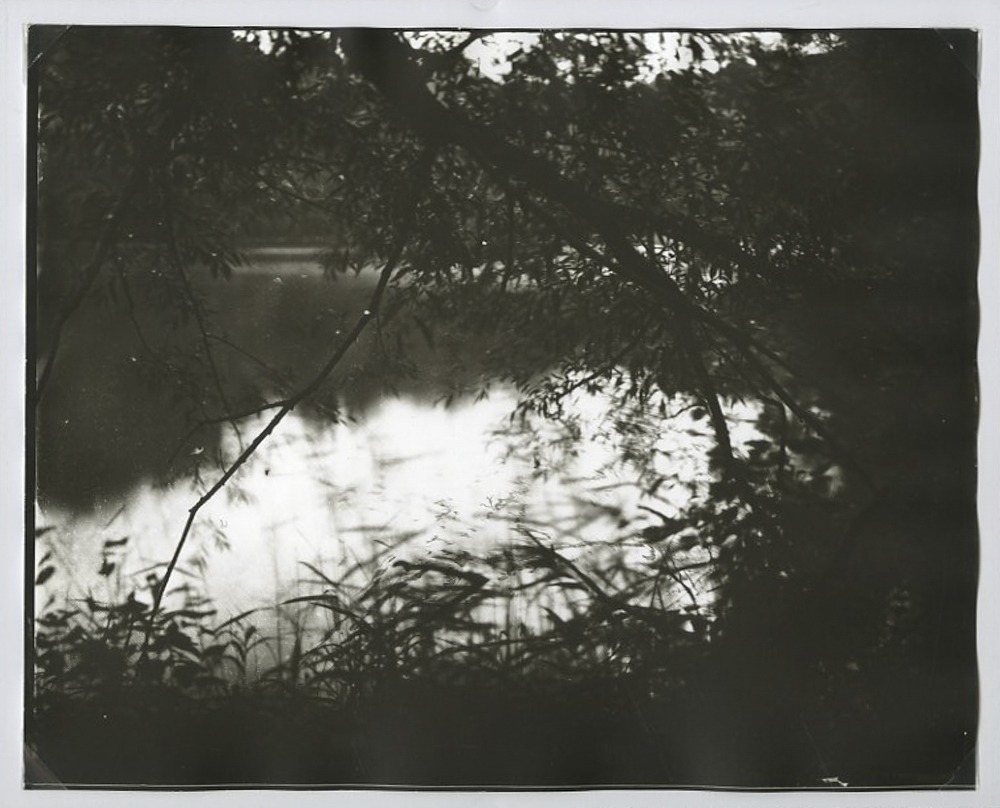
Lagoon, 2023
Hoffman Estates, Illinois.
Wet plate collodion glass negative contact print
on Bergger warm tone variable contrast paper.
8″x10″
I’ve always felt that what is really true is this idea of deep entanglement and an invitation to be present, for doing things differently, aware of the traumas, the past, and all of the unconscious, which has got us into this mess, but which allows room for healing through entirely new and also somehow, ancient ways of being, doing, thinking and making.
In my practice, I’m thinking about humility and how powerful it is, to work within some limitations with joy and acceptance, bowing down to the larger forces and embracing the beauty of being close to the ground of being, of not forcing anything, of releasing the hegemony of force against force, as it leads only to destruction of ourselves and all the beings with whom we share existence. The materials and processes I use are informed and constantly shaped by this kind of awareness, a process of continual unfolding and discovery.
I’m making handmade papers with materials from the landscapes I work in, learning about inks and toners made from plants, trees, and their seeds, galls, and other materials. Formally, I’m making work that is small and intimate, inviting closeness, and others that are large and immersive, and I hope, an invitation to the transcendent. I’m working with 19th-century processes like wet plate collodion and glass negatives to examine current problems in the landscape with this European technology born at the dawn of the Industrial Age.
I’m thinking about how the frameworks within which we live, create, and install the masks we wear both unconsciously and consciously – the personas we created and still may cling to even though the time has come for us to put them down. What will happen if we are willing to relinquish old discriminatory ideas to put down the persona of separateness? What if we peeled back that veil and embodied our true entanglement? What could we heal then? Artists are the sensitive ones, the feelers who create work to support our own well-being but also to enliven, uplift, inform, or, as Kandinsky had it, sometimes drag the culture in a new direction.
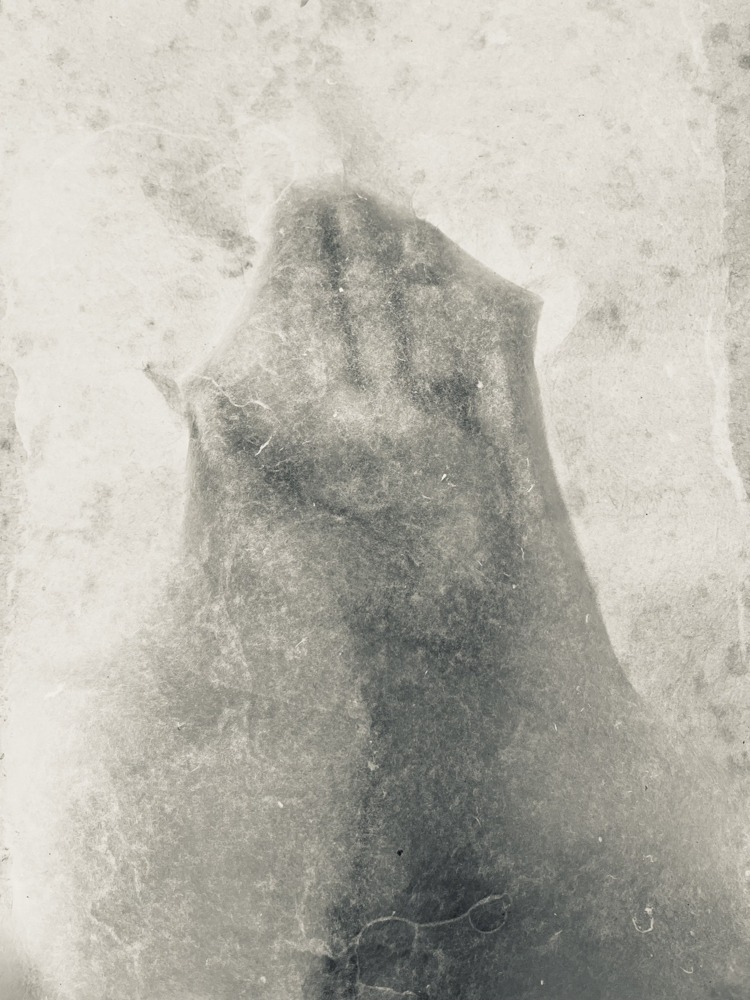
Persona 1, 2023.
Chicago, Illinois.
My hand under handmade abaca paper.
Today, I believe artists’ work is intersectional, bridging cultures, people, and ideas, collaborating, and bringing science, art, and multiple disciplines together for the greater good. Our work is practical, spiritual, and essential. It is not lost on me that in many places around the world, throughout history, just as it is darkest, artists have been making poems, paintings, drawings, music, and more, and keeping the idea of the beautiful in our minds can be our saving grace, allowing us to endure whatever is necessary to move expansively outwards, to transform and to heal, to reveal that we are much more than we might have thought.
What makes me happy in these difficult times is finding those others who want to engage in this work, to lose myself in the beautiful world. On Oct. 14, 2023, it meant being out on the shore of Lake Michigan, with an 8×10 camera and film and the wind and waves high and tumultuous, savoring all the profound feelings of aliveness. Feeling my love for the earth and receiving that love back in turn. Making the work and having all the conversations.
(1) Haraway, Donna J. Staying with the Trouble: Making Kin in the Cthulucene. Durham: Duke University Press, 2016.
IMPORTANT NOTE
After graduation, I hope to find an opportunity to go to England or Ireland to research my own ancestral lineage and do more work in the landscape and portraiture. I’m thinking a lot about the traditions of women holding wisdom and practices, witches, ancient goddesses and female spiritual practices, etc. The south of England was especially potent for me two summers ago when I went to co-lead a retreat there. Its proximity to France, where some of my mother’s family comes from, is a plus, but I am truly open to the wonders that curiosity, imagination, and serendipity might provide. I’m seeking connections and conversations that might open doors to opportunities to make this a reality, whether a fellowship, residency, curatorial practice, teaching, or something else. I would be delighted and grateful if anyone reading this might reach out if this resonates.
Thank you,
~Hillary
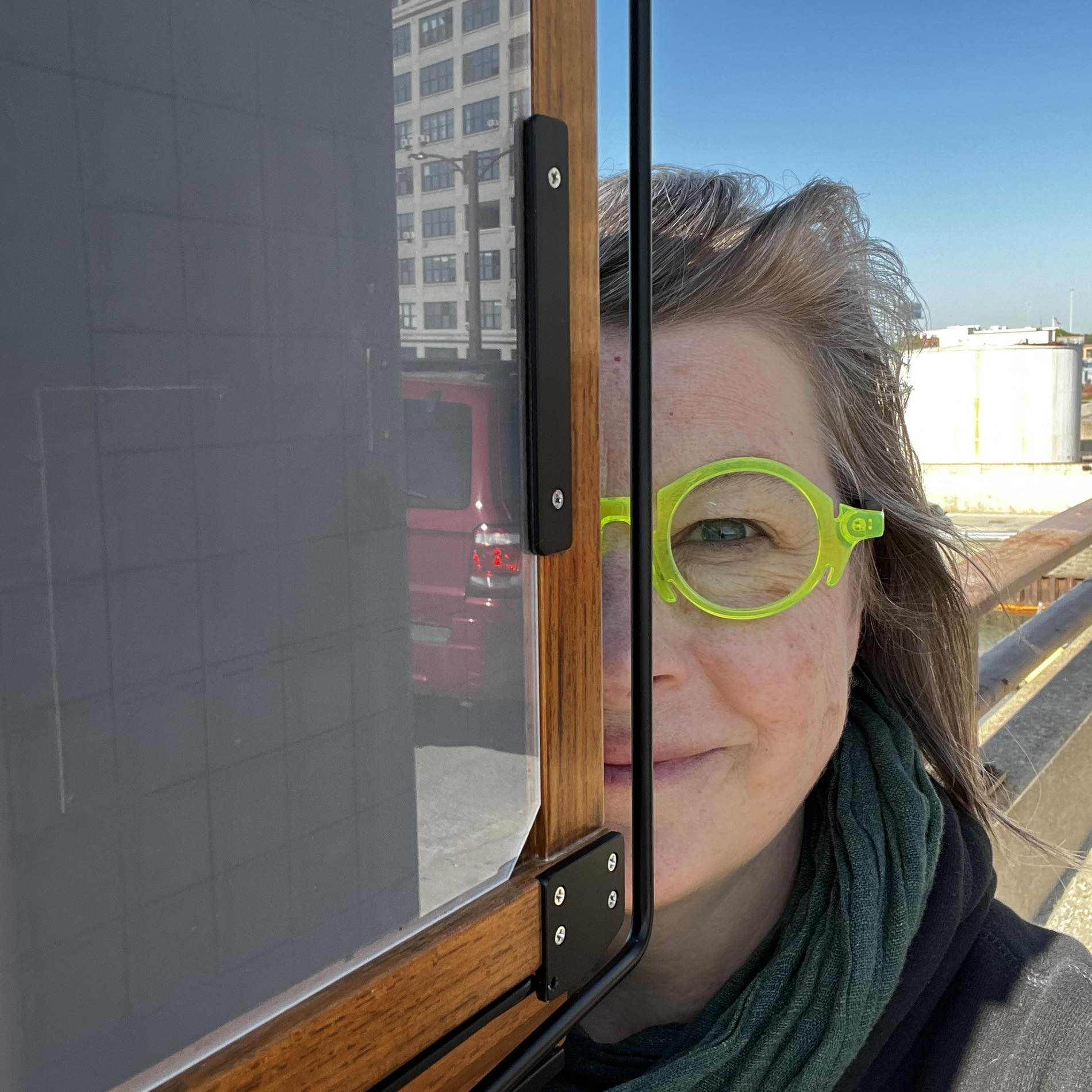
Johnson is an MFA Candidate in Photography at Columbia College Chicago where she also serves as a Curatorial and Education Assistant at the Museum of Contemporary Photography. She is recipient of an Albert P. Weisman Award, and Thall-Mulvany Awards for her work creating immersive installations that explore ways in which art and science may be a critical piece of how we create a more loving and compassionate world. Her work has been featured in What’s Next for Earth online art exhibitions in partnership with The Millennium Alliance for Humanity and the Biosphere, the 2nd Quanzhou International Image Biennale at the Fujulian Huanguang Photography Art Museum, Hüten Gallery in Shanghai, China, Image Union, Pasadena Photo Arts, The Chicago Reader, National Public Radio, NBC News, A Photo Editor, and Frontrunner Magazine. Her works have been exhibited across the United States and internationally.
She is the creator of, “The Waters We Swim In,” a global movement for self-love and compassion, grounded in a process of transformative water-based portrait sessions that invite subjects to feel greater kindness and compassion for themselves while recognizing their place in the great pattern of things.
She invites you to follow her on Instagram.
Want to connect on LinkedIn?
Want to talk? Please contact her via email.
View her CV.
This article is a contribution to the “The Arts and the Anthropocene” series by the MAHB Arts Community. If you’re an artist passionate about sharing your insights and artwork on this subject, please don’t hesitate to reach out to Michele Guieu, Eco-Artist and MAHB Art Director, at michele@mahbonline.org. Your contributions are greatly appreciated.
Thank you. ~

